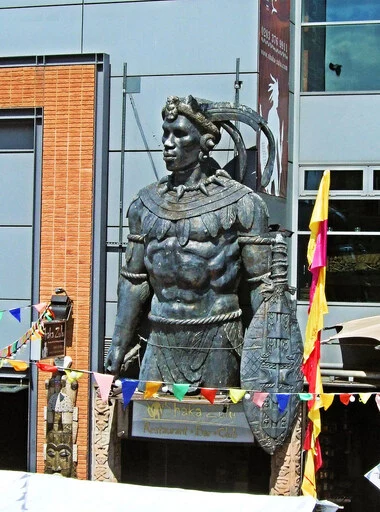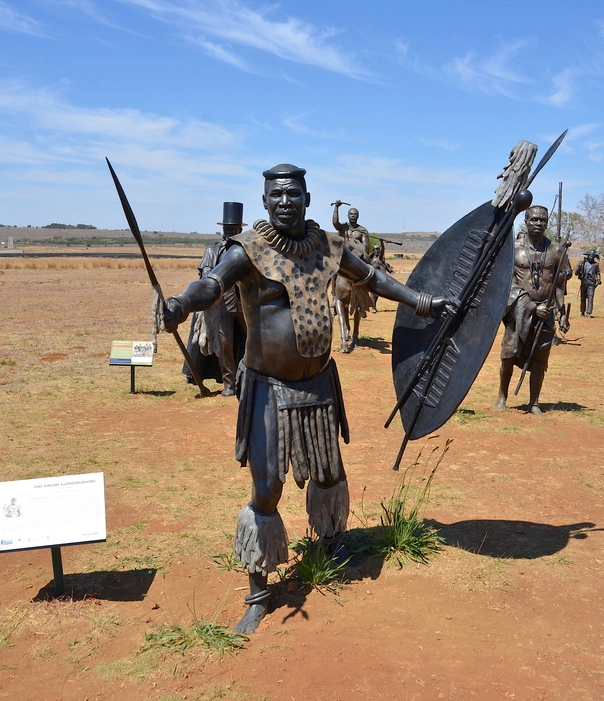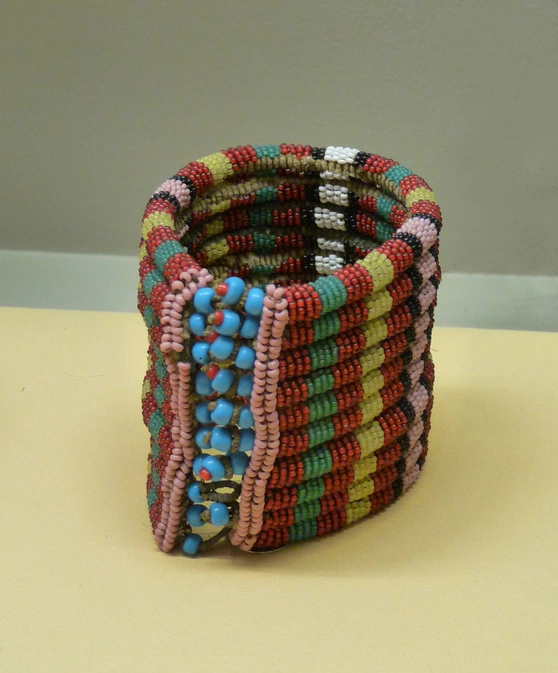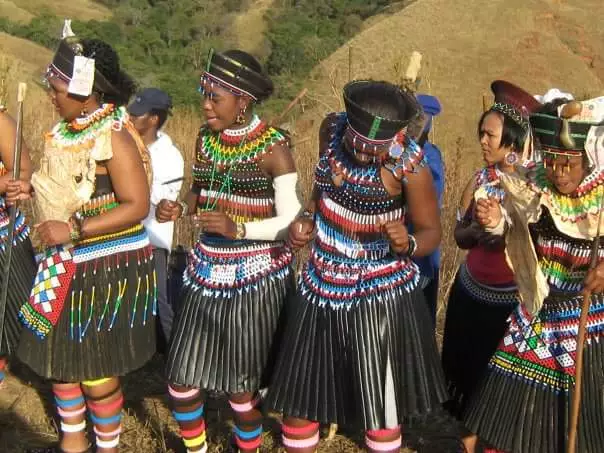- They Have A Day To Honor The Founder Of The Zulu Kingdom Annually
The Zulu people commemorate their founder and King Shaka ka Senzangakhona. They celebrate it on 24 September and named the day Shaka Day and South Africa’s national heritage day.

Shaka united the Zulu clans into one united kingdom, died in 1828, and was buried in KwaDukuza. He was killed by his two brothers Mhlangana and Dingane. He ruled over the Zulu Kingdom for 12 years and is the reason the Zulu Kingdom is very famous around the world. He portrayed the image of a strong leader and brave warrior. The Zulu people gather at the grave of King Shaka to honor him.
- They Zulu Kingdom Had The Most Elaborate Pre Colonial Military Structure

Shaka grew up in Dingiswayo’s home- who was with the mthethwa people and who was chief before shaka became king. As Shaka was in the Mthethwa group he developed courage and his talent was recognized by his overlord and was raised to become one of the Dingiswayo’s army commanders. By so doing, Shaka was given the name Nodumehlezi which means the one who shakes the earth when seated. When in the army, Shaka became more involved with the issue of strategy and battle tactics.
Once Zulu came to power, he began to rearrange the army forces according to the ideas he had come up with during his time in the army. The warriors used a traditional long-handled spear called the assegai. Shaka saw that the spears were no good for fighting and changed the long spears to short-handled spears which would prove to be beneficial in the war. Zulu taught the warriors a formation where they had to move together as a single mass with body-length shields made from cow hides which formed a very strong barrier. They mostly used a crescent-shaped formation. The most experienced warriors were placed at the center which was known as the chest. The rest of the warriors were young and fit Warriors.
They were positioned in parallel formations so that the warriors at the front would occupy the enemy as those at the back remain hidden. This strategy was designed to make the enemy believe that their opponent had a smaller force.
When in battle, the Zulus kept large troops in reserve. These troops could be used as a backup in the war when needed. Each man carried 4 to 5 spears to the battleground. One spear was heavy and short and was used for stabbing and was not supposed to be let go. The other spears were lighter and could be thrown at the enemy.
They also used great spies to obtain and transmit information. The spies reported to the Zulu generals.
- Their Language Heavily Uses Respectful Words To Address One Another
Like most of the Bantu communities, the Zulu are very keen on respect. The greeting is an important part of showing respect to other people in the community.
In the Zulu culture, a young person must greet an elder first. The child must say “sawubona baba or mama”, according to the person’s gender. The child must also bow their head down when greeting a person elder to them and boys must take off their hats. A child should not look an elder in the eye when talking to them. They should also sit or kneel down when an elder is talking to them and they are not allowed to comment when the adult is speaking.
The chief in the Zulu community is not addressed by his name. He also does not talk to anyone else except his helpers. In order to communicate with the chief, one has to consult with the elders.
- Their Beadwork Is Used To Tell A Story

The Zulu and other southern African groups have had a history of beadwork. They used pieces of bones, shells, horns, and small pieces of wood and stones to make beads which were put together to create belts and necklaces. Initially, only the kings and other members of the royal family would wear these beadwork ornaments. The beadwork is practiced by Zulu women and is passed down from one generation to another.
As time went by, the Zulu added colors to their beads. The color combination of the beads created a certain symbolism. The meaning of specific bead colors was often related to the name given to it. For instance, a ruby-colored glass bead was known as ‘inkankane’, which means, “When I see you my heart leaps up in little flames”. White beads symbolized love and when they were mixed with black beads, they symbolized that there are difficulties even in love.
The message in a specific bead work item was only fully understood by the maker since the messages were very personal.
- Together With Other Ethnic Groups, They Came Up With Ubuntu Philosophy
Ubuntu is the Zulu phrase “Umuntu ngumuntu ngabantu” which means that a person is a person through other people. Ubuntu, therefore, means “I am because you are”. It shapes the everyday life of the Zulu people.
Ubuntu is an African philosophy that incorporates the idea of oneness and humanity. There are many proverbs written about Ubuntu and how to treat other people. The Ubuntu philosophy believes that the actions of today have consequences in the future.
The Ubuntu philosophy states that you cannot be human all by yourself, when you have the Ubuntu quality, you are generous, and thinking about what you do affects you individually as well as others.
- They Take Great Pride In Their Rites Of Passage Ceremonies
The Zulu people take life as a cycle and mark each stage of life with a ceremony and ritual. They celebrate by slaughtering a sacrificial animal to their ancestors.
Umemulo

It is a ritual that is celebrated to mark a girl’s journey into womanhood. It shows that the young girl has transitioned from a child to an adult of marriageable age.
The ritual for this ceremony begins when a girl hits puberty and ends with the ceremony when she turns 21. A week before the celebration the girl is taken to a secluded hat where she undergoes a virginity test and learns how to be a woman.
During the ceremony, an animal is slaughtered and the girl and her maidens dance and feast merrily. After the ceremony girls are now allowed to send love letters. This is also the best time for young men to choose brides.
Mkhehlo & Membeso
Umkhehlo is a traditional pre-wedding ceremony. The ceremony is done for a woman who is about to get married and only takes place after Lobola (dowry) has been paid. During this ceremony, the woman bids her family goodbye.
Umembeso, on the other hand, is a traditional ceremony that is part of the lobola negotiations. It is where the groom gives gifts to the bride’s parents and family before the wedding.
Mshado
Umshado means wedding in Zulu. During this ceremony, the family of the groom slaughters a cow to show that they are accepting the bride into their home. The bride then puts money in the stomach of the cow to show that she is now a part of the family. At the end of the ceremony, the bride gives gifts to her new family.
